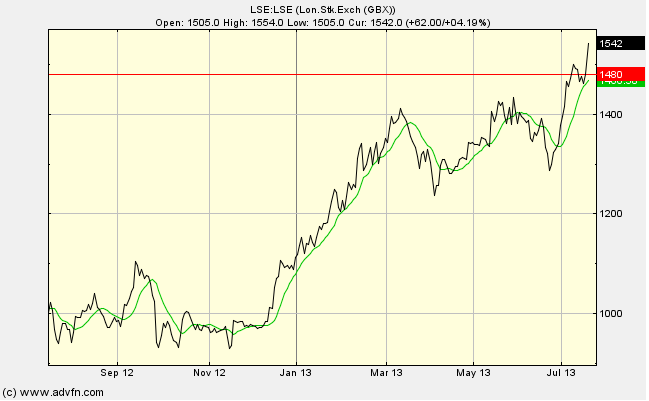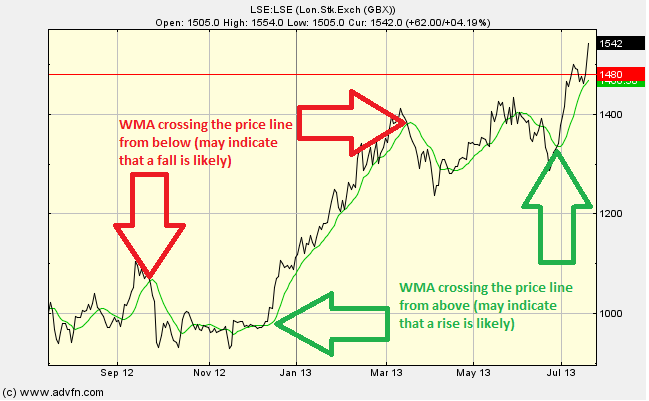Click here to read about Moving Averages.
Similar to the Simple Moving Average. The way in which the WMA differs, is that the present price(s) are given more importance than the past prices. The most recent price from the last 'x' periods is given a weighting of 'x' and every price before that is given a weighting of 1 less than the one before, until the last price is given a weighting of just 1 (very similar to Exponential Moving Average). Consequently the WMA reacts quicker than the SMA to any change in the price. When looking at an upward trend, we see that the WMA shows the trend faster than a SMA.
Although this sounds good, remember that WMA can sometimes be subject to false signals. As with the SMA you can adjust the number of periods, and offset the line by another number of periods.
Parameters: Period & Offset.
For additional help on what the different parameters mean, that isn't included on this page, click here.
Weighted Moving Average

Here is an example of an Weighted Moving Average chart study (on a London Stock Exchange graph)
Trade the same way as with the SMA. When the WMA crosses from above the price line its a good time to buy, while when it crosses from below it is a good time to sell.
WMA Crossings

Here is an example of a WMA crossing the price line (of the London Stock Exchange), and what it may indicate

It looks like you are not logged in. Click the button below to log in and keep track of your recent history.
Support: +44 (0) 203 8794 460 | support@advfn.com
By accessing the services available at ADVFN you are agreeing to be bound by ADVFN's Terms & Conditions